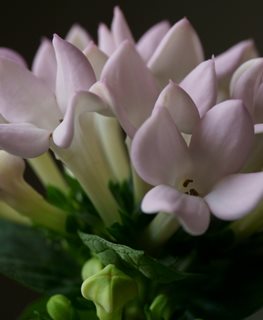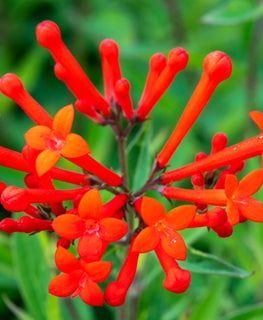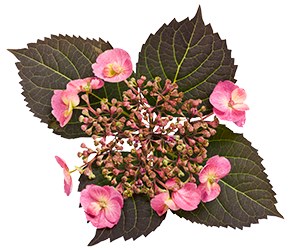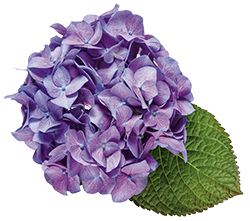How to Grow & Care For Bouvardia (Firecracker Bush)
The nectar-rich flowers of this compact blooming shrub are a magnet for pollinators.A popular addition to bouquets and floral arrangements, the vibrant blooms of Bouvardia deserve a place in the garden not only for use as a cut flower but also to attract a steady parade of pollinators.
Also known as firecracker bush or hummingbird flower, this compact shrub is covered by bright reddish-orange blooms from spring through fall. Hummingbirds are attracted to the trumpet-shaped flowers, and bees and butterflies find the scented varieties irresistible.
Native to Mexico and the American Southwest, firecracker bush thrives in warm climates and is tough enough to handle heat, humidity, and drought without missing a beat. In northern regions, you can grow Bouvardia as a showy summer annual in garden beds and containers or even indoors as a houseplant.
On this page: Basics | Planting | Care | Varieties | Frequently Asked Questions
BASICS
Botanical name:
Bouvardia spp. and hybrids
Common names:
Firecracker bush, hummingbird flower, trompetilla, clavillo, trumpet flower
Plant type:
Deciduous or evergreen shrub
Zones:
Typically 8-11, with some hardy to zone 7
Native area:
Central America and Mexico, with the species B. ternifolia growing wild throughout parts of Texas, New Mexico, and Arizona
Exposure:
Full sun to part shade
Growth habit:
Upright and shrub-like
Height/spread:
2 to 4 feet tall and 2 to 3 feet wide
Bloom time:
Midspring until the first hard frost
Foliage:
Linear to oval-shaped dark green leaves are arranged in whorls along woody stems. Foliage will remain evergreen in frost-free areas.
Flowers:
Clusters of long, tubular flowers with flaring petals most commonly bloom in shades of red and orange, although you can also find pink, yellow, and white varieties. Some types display multiple color variations within the same bloom cycle. Some varieties are scented, but not all.
Special attributes:
- Deer resistant
- Drought tolerant
- Attracts hummingbirds, bees, and butterflies
- Lightly fragrant, with the scent becoming more pronounced at night
Landscape uses:
Container gardens, mass plantings, cut flower gardens, shrub borders, pollinator gardens
PLANTING BOUVARDIA
When to plant:
In spring, after the threat of frost has passed, or in early fall in frost-free climates.
Where to plant:
Although plants can tolerate partial shade, a location with full sun (at least 6 hours daily) will ensure the best flowering. In areas with hot summers, like the deep South, plants will benefit from filtered shade in the afternoon.
How to plant:
Dig a hole about twice as wide but no deeper than the plant's root ball. Mix any amendments, as needed, into the soil and place the plant in the hole so the crown is level with the soil surface. Backfill with the excavated soil, tamping it down gently. Water thoroughly, then check the soil level and add more soil if necessary.
Soil:
Average, well-draining soils having an acidic pH. Plants grow poorly in overly wet, alkaline soils. Learn how to test and adjust the pH of your soil.
Spacing:
2 to 3 feet apart, depending on width at maturity
Growing in containers:
You can also grow firecracker bush in containers on patios and balconies. Choose a pot at least 3 gallons in size and fill with a high-quality potting mix.
BOUVARDIA CARE
Watering:
Water plants, as needed, to provide 1 to 2 inches of water weekly. Container-grown plants will require more frequent watering and should be given a soaking when the top inch of soil feels dry to the touch. Once established, Bouvardia can tolerate periods of drought but will perform better when watered regularly.
Amendments and fertilizer:
Fertilize plants in early spring with a slow-release fertilizer formulated for flowering trees and shrubs, following the instructions on the label for the recommended rate of application. If you have clay soil, mix in some organic matter to improve aeration, promote drainage, and boost soil fertility. Avoid excessive fertilization, which can make plants leggy and cause taller stems to flop over.
Pruning and deadheading:
Regular pruning is rarely necessary, since plants will maintain their natural habit without much shaping. However, if you want to make plants more compact and bushy, you can prune them back by about one-third in spring, cutting back to a set of leaves. If you are growing firecracker bush as a perennial, you can also prune plants back during their dormancy period in late fall or early winter before new growth reemerges in spring.
Although deadheading isn’t necessary for re-bloom, you can remove the spent flowers, if desired, to keep plants looking neat and tidy.
Propagation:
From root cuttings or softwood cuttings taken in spring.
Pests and diseases:
Few serious pests or diseases bother Bouvardia, but be on the lookout for whiteflies and mealybugs.
BOUVARDIA VARIETIES
FREQUENTLY ASKED QUESTIONS
Is Bouvardia an annual or perennial?
Firecracker bush is a perennial shrub in warmer climates, but will not survive temperatures below 10 to 15 degrees F.
How do I grow Bouvardia indoors?
Sometimes sold as a houseplant, Bouvardia is easy to grow indoors. But, to ensure flowering, you must place it in a spot where it will get plenty of light, such as a south-facing window or under grow lights. Keep at a room temperature above 60 degrees F and water deeply when the soil is dry to the touch, allowing excess water to run out of the bottom of the pot to prevent root rot.
Is firecracker bush the same as firecracker plant?
There are a few plants that share the common name of firecracker plant or firecracker bush. Two of the most common are Cuphea and Russelia equisetiformis. Cuphea is a tender perennial with blooms very similar in appearance to those of Bouvardia, but much smaller. Russelia equisetiformis, hardy in Zones 9-11, has cascading rush-like stems and clusters of scarlet tubular flowers. Both thrive in summer sun and heat, and when grown as annuals, will bloom from spring until the first frost.
Is Bouvardia a long-lasting cut flower?
As a cut flower, the blooms of hummingbird flower can last up to two weeks in a vase. For the longest vase life, choose stems with flowers that have just begun to open and remove all foliage that will sit below water level.
What does the firecracker bush flower symbolize?
Bouvardia is associated with enthusiasm, passion, and a zest for life and is often included as a cut flower in bouquets celebrating special occasions.













